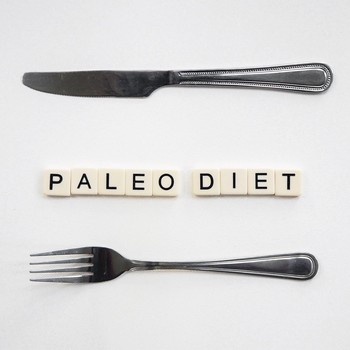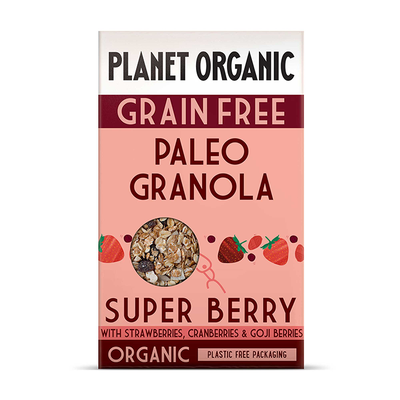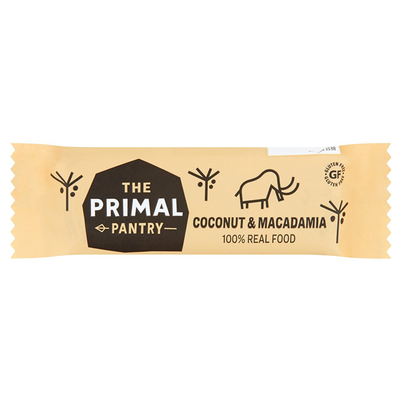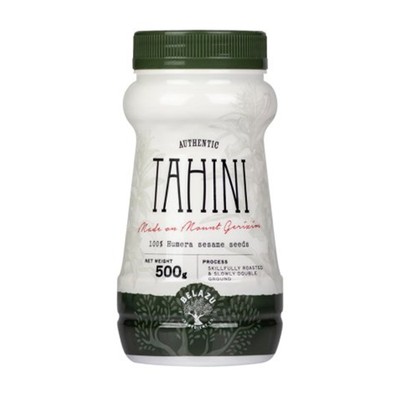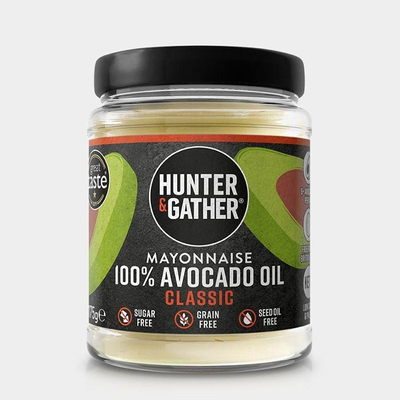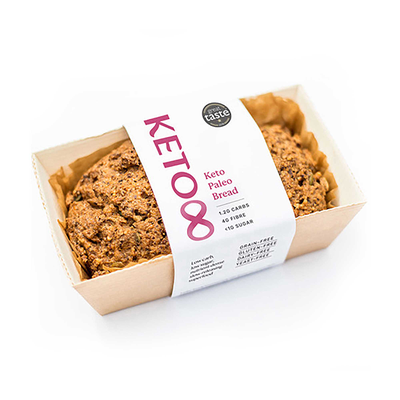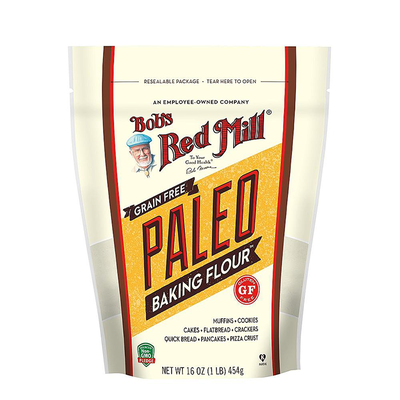The Paleo Diet: What You Need To Know
All products on this page have been selected by our editorial team, however we may make commission on some products.
So what is the Paleo diet?
In a nutshell, the Paleo diet is a way of eating that seeks to ditch processed foods in favour of natural, nutrient-dense foods that were eaten by our hunter-gatherer ancestors. “The Paleo diet seeks to replicate the way humans ate during the Paleolithic era more than two million years ago,” Pete Williams, founder of Functional Medicine Associates, tells SL. “It was developed by Dr Loren Cordain and other scientists, back in 1975 after years of extensive research into the optimal human diet. But no one can be completely certain about what our ancestors ate two million years ago, so there’s debate over what can and can’t be included in a Paleo diet. For this reason, there are many different versions of the diet – you may see it referred to as the Primal Diet, the Caveman or Stone Age Diet, or the Evolutionary Diet.” However, one thing all these eating plans have in common is natural food. The Paleo diet is about eating real food and maximising nutrient density.
What’s off the menu?
The Paleolithic era was pre-agricultural and many foods we consume in abundance today were unsuitable for consumption in their raw form. Many Paleo devotees believe our digestive systems have changed little since then, and that eating certain foods puts strain on the gut, including legumes (chickpeas, beans and lentils), cereal grains (think rice, oats and quinoa), refined sugar, salt, dairy and refined vegetable oils. “People following a strict Paleo diet also exclude starchy vegetables such as potatoes and carrots, alcohol and coffee,” adds Pete.
What can you eat?
While this list may sound restrictive, there is plenty you can eat. “You should focus on lean protein, fruits and vegetables over processed foods. Load up on lean meat, fish and shellfish, eggs, nuts and seeds, vegetables, low-glycaemic fruits, and olive, avocado and coconut oils,” says Pete. The experts recommend including an unprocessed source of protein at every meal, with bonus points if it’s oily fish such as salmon or mackerel, which made up 60% of protein intake in the Stone Age. At the same time, aim for at least five portions per day of fruit and veg and plenty of plant-based fats. “Eat walnuts, almonds, sunflower and pumpkin seeds, as well as some healthy fats like organic nut butters and avocados,” adds nutrition expert Penny Weston.
What does a typical day’s Paleo menu look like?
“Breakfast could be a smoothie made with bananas, spinach, blueberries and homemade nut milk, or scrambled eggs made with soy milk instead of dairy milk,” says Penny. “Or you could try making your own banana pancakes made with eggs, bananas and coconut flour instead of normal flour. Lunch could be a shakshuka or an omelette, while supper could be salmon with fennel and tomatoes, or lamb chops with an aubergine salad.” Pete also recommends frittatas packed with vegetables, prawn and chicken salads, and lamb and beef stews, which you can serve with cauliflower rice instead of potatoes.
What are the Paleo kitchen essentials worth stocking up on?
“I’m a big fan of ground almonds and use them to make everything from waffles to pancakes and more,” says Pete. “You also can’t go wrong with whole nuts and nut butters, a variety of seeds (sunflower, pumpkin, chia, linseed and sesame), shredded coconut, fresh and dried herbs and spices, and olive oil. Make sure your fridge is always stocked with fresh fruits and vegetables and source the best quality, fresh, lean meat and fish you can afford. If you’re interested in starting a Paleo diet, it’s worth doing some research and getting a list of recipes together and then stocking your cupboard and fridge.” When you’re next in the supermarket, keep an eye out for brands like The Paleo Foods Co, which make delicious snack bars, while Planet Organic does its own range of grain-free granolas.
“If you’re interested in going Paleo, just be really careful with packaged products, especially those which contain more than five ingredients, and especially those ingredients you struggle to pronounce,” advises Jennifer Irvine, founder of The Pure Package. “It’s easy to pick up something that says it’s Paleo friendly, but is actually processed. Take vegetable crisps, for example, which look healthy on the outside, but if you look at the ingredients list, they are actually ultra-processed. Instead, try making your own with fresh kale, a drizzle of olive oil and tahini. Cans of chopped tomatoes (with no additives) and jars of roasted peppers are also great to have on hand,” she says.
Does eating Paleo put you at risk of any deficiencies?
When trying a new diet, it can be easy to get into a rut of using the same ingredients, and this is a sure-fire way to develop a deficiency, says Jennifer. “The Paleo diet is particularly low in carbs as it excludes all grains, legumes and pulses, and these important carbs contain vitamins such as B6 as well as fibre, both of which the body needs in decent amounts.” Penny adds legumes are rich in vital minerals such as magnesium, selenium and manganese, so be sure to eat alternative sources, such as spinach, almonds, avocado, Brazil nuts and tuna. However, it’s also worth remembering you can become deficient in any nutrient, regardless of your dietary approach and how wholesome it is. “Some people may also be at risk of a deficiency from having an underperforming digestive tract that isn’t breaking down, absorbing or assimilating foods correctly,” adds Pete. “As with any dietary approach, the most important thing to consider is that you have as much variety as possible – mix up ingredients from week to week and always eat the rainbow.”
What does the science say?
Filling up on foods similar to those your Stone Age predecessors may have eaten could be an effective and healthy way to lose weight and keep it off in the long term, according to one study. After six months eating in a Paleolithically inspired way, women participating in the study lost more weight than women eating a more traditional diet – 9kg vs 6kg on average. What’s more, a larger percentage of that weight came from around their middles, slimming down their waistlines and reducing levels of the harmful abdominal fat that has been linked to an increased risk of type 2 diabetes and cardiovascular disease.
“In short-term studies a Paleo diet shows beneficial results across the board of chronic diseases from diabetes to obesity and Alzheimer’s,” adds Pete. “This is most likely because cutting out processed foods reduces low-grade inflammation that is often an underlying cause of many modern-day diseases.” Penny adds that a Paleo diet can promote healthy blood glucose and improve insulin sensitivity, as well as helping to lower blood pressure and improving cholesterol balance.
The bottom line?
“The Paleo diet encourages you to avoid highly processed foods that contain added salt, sugar, unhealthy fats and other additives, and to include more nutrient-dense, whole, fresh foods,” says Pete. “This is an approach to eating we could all benefit from, especially given the typical Western diet is high in processed foods.” Plus, a diet that’s rich in good-quality protein and unsaturated fats can help you to feel more satisfied, which in turn can help you to eat less. If, however, certain elements of the Paleo diet feel too restrictive, you could trying making a few simple swaps. “Even if you go 50% Paleo, you’ll reap the benefits. It’s a flexible way of eating we can all learn from,” concludes Pete.
Shop Our Favourite Paleo Picks Below...
For more information visit Functional-Medicine.Associates, WelcomeToMade.com and PurePackage.com
DISCLAIMER: Features published by SheerLuxe are not intended to treat, diagnose, cure or prevent any disease. Always seek the advice of your GP or another qualified healthcare provider for any questions you have regarding a medical condition, and before undertaking any diet, exercise or other health-related programme.
DISCLAIMER: We endeavour to always credit the correct original source of every image we use. If you think a credit may be incorrect, please contact us at info@sheerluxe.com.
